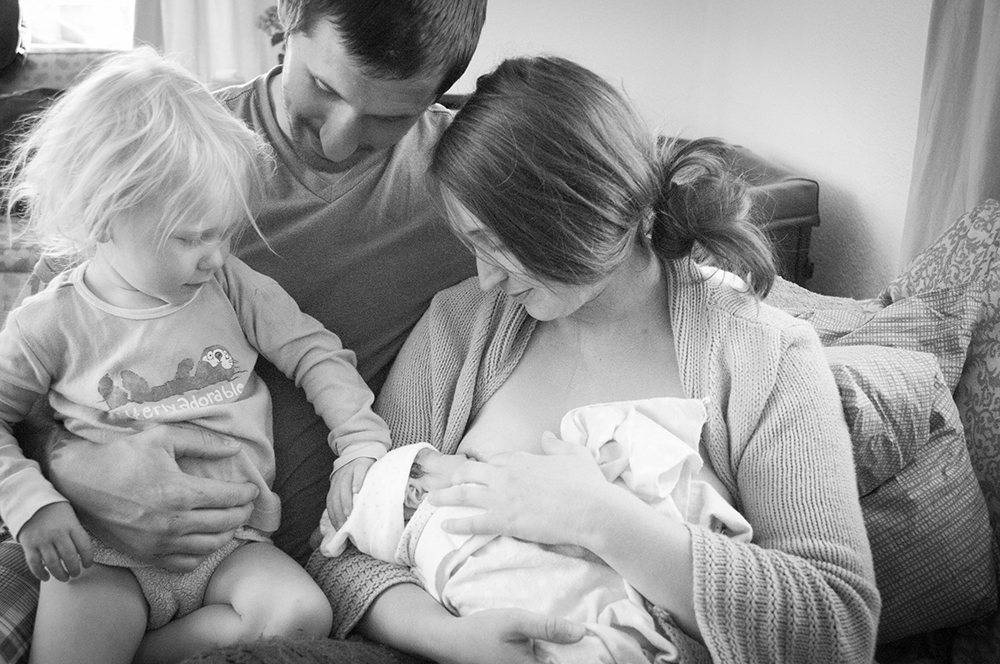Buffy Sainte-Marie, a Native Canadian musician, artist, educator, and social activist, breastfed her son on Sesame Street while she and Big Bird talked about how nice it was for them both. That was in 1977, when media access was extremely limited compared with today. Between 1998-2004, I breastfed my babies everywhere, except public restrooms. It was great on airplanes because nothing keeps a baby quiet for the duration of a flight like momma’s milk. Last week, I read in an Instagram post that a woman breastfeeding on a plane was harrassed by another passenger, and told she should put her clothes back on. Shaming and judgement are apparently the norm now. So, why, then can’t we see the breast?
I remember breastfeeding, and I don’t mean my own babies, I mean doing it myself. I have one distinct memory of the love, the warmth, the physical awesomeness of it, and how sweet the milk was. When my mother spoke to me about all things sex in my pre-teens, she reminisced about how wonderful it was to breastfeed, saying it was one of the best things she’d ever done. At the time I didn’t realize I was being raised in a feminist household, I just assumed these were things mothers say. When I had my own babies, of course I did as my mother had, because we learn how to mother from our own. Life and community begin with our mothers during our first three years, when we absorb the most.
That natural progression of motherhood, an aspect of tradition and culture since the beginning of human history, has been extracted for many people so that they either don’t know what their mothers did, or are shamed from doing it. It holds true for all women, irrespective of original culture. In the West, we’ve had five hundred years of naked women and breastfeeding ladies, also men and babies, who were painted and sculpted on church walls and ceilings, in the homes of royals, and at art schools. But in modern media, the breast has become a spectacle in which the glorious nipple is a bad thing, unless of course it’s on a man (because whoever decides these things hasn’t discovered that men, too, are aroused by their nipples, but that’s a different discussion).
The World Health Organization advises that babies be fed from their mother’s breast exclusively from birth until they are six months old, and for up to 18 months or more afterward along with the introduction of food. While babies are breastfed they receive the mother’s immunity, and are less likely to have asthma or allergies. According to some studies, mental development is enhanced by skin-to-skin contact for our first three years of life. Mothers and babies both produce oxytocin during breastfeeding and the mother even transfers some of hers to her baby–that oxytocin helps babies learn how to bond to others and helps mothers learn how to bond in mothering. Even fathers who live with breastfeeding mothers show increased levels of oxytocin, and the more time they get with the baby, the more they make. According to studies, formula-fed babies too, when receiving skin-to-skin contact, produce oxytocin. For the mother, it is linked to a decrease in post-partum depression and increase in overall health, including decreased risk of breast cancer and heart disease later on. And of course, breastfeeding is free.
In addition to the WHO, the Natural Resources Defense Council, the National Institutes of Health, the Center for Disease Control, and UNICEF all advocate breastfeeding for babies and mothers. They recommend on-demand feeding, or when the baby wants it. No, it doesn’t spoil them — because babies are growing at a phenomenal rate, they are hungry all the time. On-demand feeding has the pscyhological benefit of forging a deep sense of their own security and survival, which actually makes them strong enough to grow up and be independent without being anti-social. On-demand means not only whenever, but wherever a baby and mother happen to be.
Many women in the U. S. do initiate breastfeeding but are unable to continue — the anxiety of social pressure and going back to work can make it extremely difficult, if not impossible. Some people have no choice but to formula-feed, and of course, these families are then shamed for that, too.
In other words, breastfeeding is a Public Health issue and not one of socially deviant or sexually exhibitionist behavior, what breastfeeding opponents like to say. Like nutrition, it supports stronger and healthier mothers and babies, families and communities. Funding for breastfeeding education and support is low, which often means that the families who need it most get it the least.
The health of a community begins with its families, and even if you haven’t got children yourself, someone else’s will become adults in no time at all, and they’ll be part of your community. And because we all age, you’re likely at some point to have to depend on younger generations.
Have you ever tasted how sweet and strong community can be? In February I went to a meeting of women — some with babies, some whose children had grown, and some who are community organizers. The Taos Chapter of the New Mexico Breastfeeding Task Force facilitated a group of Native, Hispanic, Black, and White women to brainstorm how to help women and their families in Taos meet their breastfeeding goals.
Forty women gathered over food provided by the mothers of the Tiwa Babies, and divided into groups to sift through our ideas. We came up with what we each individually would like to see happen in Taos, and then discussed with our group what was strongest, what was similar. Finally, we pooled with the other groups and organized our ideas, categorizing them into topics for action for our next meeting. The result was amazing — efficient, intelligent, and creative problem-solving.
If you’re interested in future meetings, the New Mexico Breastfeeding Taskforce, Taos Chapter, welcomes everyone.
Real community is a power to be reckoned with.
For more information on local efforts to encourage breastfeeding, or for breastfeeding support:
Taos Pueblo Health and Community Services: 758-7824
Taos First Steps: 751-5858
Taos Center for Breastfeeding: 770-8558
Taos WIC: 758-2078
Indian Health Services: 758-4224
To check out Taos photographer Heather Lynn Sparrow:
For more beautiful images of breastfeeding women and families:



